NIMBioS Calendars: Events Seminars Live Streaming Visitors Working Groups Workshops Tutorials Other
2017 Archive: NIMBioS Seminars
 In conjunction with the interdisciplinary activities of the National Institute for Mathematical and Biological Synthesis (NIMBioS), a seminar series on topics in mathematical biology is hosted at NIMBioS every other Tuesday at 3:30 p.m. (unless otherwise noted) in Hallam Auditorium, Room 206, Claxton Building, 1122 Volunteer Blvd.
Seminar speakers focus on their research initiatives at the interface of mathematics and many areas of the life sciences. Light refreshments are served in the 1st floor visitor breakroom beginning 30 minutes before each talk. Faculty and students from across the UT community are welcome to join us.
In conjunction with the interdisciplinary activities of the National Institute for Mathematical and Biological Synthesis (NIMBioS), a seminar series on topics in mathematical biology is hosted at NIMBioS every other Tuesday at 3:30 p.m. (unless otherwise noted) in Hallam Auditorium, Room 206, Claxton Building, 1122 Volunteer Blvd.
Seminar speakers focus on their research initiatives at the interface of mathematics and many areas of the life sciences. Light refreshments are served in the 1st floor visitor breakroom beginning 30 minutes before each talk. Faculty and students from across the UT community are welcome to join us.
Video Archive of NIMBioS Seminars
Archived Seminar Calendars:
2020
2019
2018
2017
2016
2015
2014
2013
2012
2011
2010
2009
*NIMBioS Postdoctoral Fellows Invited Distinguished Visitor
Seminar Abstracts
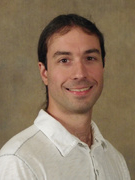 Time/Date: 3:30 p.m. Tuesday, November 28
Time/Date: 3:30 p.m. Tuesday, November 28Location: Hallam Auditorium, Room 206, Claxton Building, 1122 Volunteer Blvd.
Speaker: Christopher Strickland, Mathematics, Univ. of Tennessee, Knoxville
Topic: Modeling invasion at multiple scales
Abstract: Biological invasions often have outsized consequences for the invaded system and represent an interesting challenge to model mathematically. Landscape heterogeneity, non-local and time-dependent spreading mechanisms, coarse data, and the presence of long-distance transportation connections are but a few of the complications that can greatly affect our understanding of invasive spread. In this talk, I will look at dispersal from a multi-scale perspective in an attempt to address some of these challenges, and briefly discuss a few of my other current research projects. Considering the problem of long-distance dispersal, I will discuss a method for modeling invasive spread over large, heterogeneous landscapes by interpreting the quantity of interest as species occurrence probability rather than population size. Adding to this is a method for considering the effects of a disease-vector transportation network which can unwittingly transport a biological invader to distant sites. I will then shift focus to the initial stages of an invasion and concentrate on the local- and meso-scale by considering the intentional release of a parasitoid wasp biocontrol agent. Results connect the model to data using a Bayesian framework and indicate that fluid physics above the landscape likely play a critical role in the kilometer scale dispersal process. Finally, I will describe some of my current work involving fluid-based organism movement, network structure, and epidemic dynamics in the context of opioid addiction. Click here for more information. Seminar flyer (pdf).
 Time/Date: 3:30 p.m. Tuesday, November 21
Time/Date: 3:30 p.m. Tuesday, November 21Location: Hallam Auditorium, Room 206, Claxton Building, 1122 Volunteer Blvd.
Speaker: Harshana Rajakaruna, Postdoctoral Fellow, Microbiology, Univ. of Tennessee
Topic: Effect of yearly temperature cycles on species richness and population fitness: Insights from marine copepods
Abstract: Species richness (α-diversity) and population fitness (intrinsic growth rate) of fast-maturing marine copepods are generally explained as functions of ambient temperature. However, such explanations commonly take into account the long-term average sea temperatures. Yet, sea temperatures fluctuate yearly and quite dramatically in some marine regions. We will illustrate how large amplitudes of yearly temperature cycles could reduce both species richness and population fitness of marine copepods resulting from reduced generation times. These reductions can be explained by Jensen's inequality, which relates the value of a concave function of an integral to the integral of the concave function. Scientific cruise survey data supports our theoretical model predictions. The study leads to the question whether the gradient of the amplitudes of temperature cycles, between habitats with similar yearly mean temperatures, ecological and environmental conditions, influences a class of fast-maturating copepods to colonize new habitats and increase species richness. The study also gives insights into range-expansion and diversity of species in the presence of a general rise in sea temperatures with changes in the degree of their fluctuations. Click here for more information. Seminar flyer (pdf).
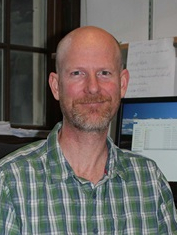 Time/Date: 3:30 p.m. Tuesday, November 14
Time/Date: 3:30 p.m. Tuesday, November 14Location: Hallam Auditorium, Room 206, Claxton Building, 1122 Volunteer Blvd.
Speaker: Scott Nuismer, Biological Sciences, Univ. of Idaho
Topic: Evaluating the promise of a transmissible vaccine
Abstract: The development of viral vaccines has had remarkable and long-lasting impacts on human health and on the health of domestic and wild animal populations. Despite these impressive successes, many infectious diseases cannot yet be efficiently controlled or eradicated through vaccination programs because it is impossible to vaccinate a sufficient proportion of the population to guarantee herd immunity. Recent advances in molecular biology suggest that the centuries-old method of individual-based vaccine delivery could be on the cusp of a major revolution. Specifically, genetic engineering brings to life the possibility of a transmissible vaccine. In this talk, I will present the results of mathematical models quantifying the extent to which vaccine transmission can facilitate the eradication of endemic infectious diseases and reduce the magnitude of epidemics. In addition to quantifying these positive properties of vaccine transmission, mathematical results will illustrate key challenges imposed by vaccine evolution and identify potential solutions. Click here for more information. Seminar flyer (pdf).
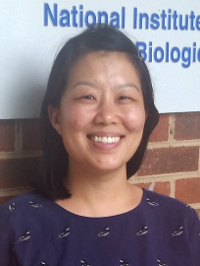 Time/Date: 3:30 p.m. Tuesday, October 24
Time/Date: 3:30 p.m. Tuesday, October 24Location: Hallam Auditorium, Room 206, Claxton Building, 1122 Volunteer Blvd.
Speaker: Charlotte Chang, NIMBioS postdoctoral fellow
Topic: The social determinants and ecological consequences of indiscriminate hunting in tropical Asia
Abstract: Overexploitation is one of the most prominent threats facing tropical vertebrates. Management has typically adopted single-species models and has not prevented population collapse. One major complicating factor is that hunting exploits multiple prey species simultaneously, particularly in open-access systems. Using Southwest China as a case study, I found that hunting was largely sustained by resilient ungulate and passerine stocks. As hunting effort has persisted, more sensitive species have been extirpated. Recreation was the main motivator of hunting, which may be more widespread in the developing world than previously appreciated. Monitoring trends in hunting effort largely depends on human subjects interviews, and indirect surveys are powerful tools requiring specialized estimators. I developed an open-source software package, applying it to determine what factors are associated with illegal hunting in Southwest China. I explored what rules may structure hunter prey choice decisions, in order to understand how salient traits (e.g. body mass) could simplify otherwise complex indiscriminate harvesting systems. I then incorporated these findings into a theoretical model to explore potential thresholds in body mass under open-access hunting. Click here for more information. Seminar flyer (pdf).
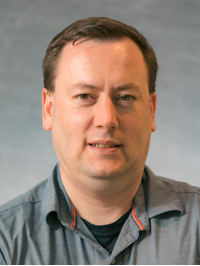 Time/Date: 3:30 Tuesday, October 17
Time/Date: 3:30 Tuesday, October 17Location: Hallam Auditorium, Room 206, Claxton Building, 1122 Volunteer Blvd.
Speaker: Scott J. Emrich , Bioinformatics, Univ. of Notre Dame
Topic: Integrating diverse data for improved computational genomics
Abstract: Genomics-driven analysis of many important species, which we have called "non-models", remains challenging. My group is funded by the NIH to computationally leverage and enhance newer higher-throughput sequencing with domain expert-provided metadata including biological phenotypes (e.g., drug resistance in malaria), protein folding experiments, and karyotype data from mosquitoes. For this talk I will focus on updates to our 2016 ACM BCB paper, which has been recently published in IEEE/ACM Transactions on Computational Biology and Bioinformatics (TCBB). Previous computational approaches for imputation of missing genotype data have relied on a linear order of markers and a genotype panel, both of which are not common in non-models. We address this limitation with our ADDIT (Accurate Data-Driven Imputation Technique) approach, which is composed of two data integration-focused algorithms: a non-model variant that employs statistical inference, and a model organism variant that better leverages reference data using a supervised learning-based approach. I will show that ADDIT is more accurate, faster and requires less memory than state-of-the art methods using model (human) and non-model (maize, apple, grape) datasets. I will conclude with emerging "–omics" results from a few other current projects, most involving either a mosquito vector or the disease they transmit. The methods we are developing combine traditional sequence-based analysis with existing and new models, mostly network-based, through collaborations to best integrate diverse data types. I will discuss some early successes and challenges, with the latter hopefully a start for new discussions in Knoxville come January. Click here for more information. Seminar flyer (pdf).
 Time/Date: 3:30 Tuesday, October 10
Time/Date: 3:30 Tuesday, October 10Location: Hallam Auditorium, Room 206, Claxton Building, 1122 Volunteer Blvd.
Speaker: Ruian Ke, Mathematics, North Carolina State Univ.
Topic: Superinfection and cure of infected cells as novel mechanisms for hepatitis C virus expansion and persistence
Abstract: RNA viruses exist as a genetically diverse quasispecies with extraordinary ability to adapt to abrupt changes in the host environment. However, the mechanisms that contribute to their rapid adaptation and persistence are not well studied. Here we probe hepatitis C virus persistence by analyzing clinical samples taken from subjects who were treated with a novel protease inhibitor. Frequent longitudinal viral load determinations and single genome sequence analyses revealed rapid antiviral resistance development, and surprisingly, dynamic turnover of dominant drug resistant mutant populations long after treatment cessation. We fitted mathematical models to the data, and the results provided strong support for the critical roles that superinfection and cure of infected cells play in facilitating the rapid turnover and persistence of viral populations. Thus, we propose a new theoretical framework integrating viral and molecular mechanisms to explain rapid viral evolution, resistance and persistence despite antiviral treatment and host immune responses. Click here for more information.
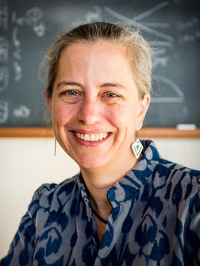 Time/Date: 3:30 Tuesday, September 26
Time/Date: 3:30 Tuesday, September 26Location: Hallam Auditorium, Room 206, Claxton Building, 1122 Volunteer Blvd.
Speaker: Elizabeth Borer, Ecology, Evolution, and Behavior, Univ. of Minnesota; NIMBioS Postdoctoral Fellows Invited Distinguished Visitor
Topic: Tools to predict future Earth: Using theory and experiments to guide expectations for the future of the world's grasslands
Abstract: Among the greatest current challenges for ecology is understanding the links between biodiversity and ecosystem function, on one hand, and global-scale changes to nutrient cycles and species distributions, on the other. While these grand challenges are global in scale, such ecological experiments and sampling must be done at local scales. Distributed experimental networks, in which scientists around the world collaboratively replicate an experiment under many environmental conditions, are one tool with the potential to bridge the gap between site-scale experiments and global-scale predictions. Hypotheses generated from mathematical theory can serve as a logical guide in analyzing and interpreting data from sites around the world, providing insights into widespread responses and those that are context-dependent. By using theory to guide expectations, the Nutrient Network, a decade-long experiment being replicated at >100 sites around the world, has demonstrated that species diversity promotes ecosystem productivity and stability, and that nutrient supply and herbivory control diversity via changes in species composition, including invasions of non-native species and extinction of native species. I will discuss my experience of implementing a distributed network of identically-replicated grassland experiments motivated to build on ecological theory and will present some of the Nutrient Network's recent insights into the controls of diversity and function in the world's grassland ecosystems. Click here for more information. Seminar flyer (pdf).
 Time/Date: 3:30 Tuesday, April 18
Time/Date: 3:30 Tuesday, April 18Location: Hallam Auditorium, Room 206, Claxton Building, 1122 Volunteer Blvd.
Speaker: Ward Wheeler, Invertebrate Zoology, American Museum of Natural History, NY, NY; NIMBioS Postdoctoral Fellows Invited Distinguished Visitor
Topic: Improvements in tree and network alignment algorithms
Abstract: Tree-Alignment (sensu Sankoff) has been known to be NP-hard for some time. Recent improvements in both the quality (in terms of optimality score) and time complexity of heuristic approaches to this problem are discussed in the context of soft-wired networks. The effectiveness of these approaches to both simulated and real data sets are discussed. Click here for more information. Seminar flyer (pdf).
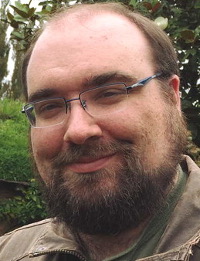 Time/Date: 1:00 p.m. Thursday, April 13
Time/Date: 1:00 p.m. Thursday, April 13Location: NIMBioS, Room 103, Claxton Building, 1122 Volunteer Blvd.
Speaker: Eric Lofgren, Paul G. Allen School for Global Animal Health, Washington State Univ.
Topic: The Patient-Patch: Recasting hospital epidemiology as an ecology problem
Abstract: Healthcare-associated infections are a major source of mortality in the United States and abroad, and represent a severe drain on the healthcare system. These infections arise from the complex interactions between microbes, patients, providers and the built environments, and have proved difficult to control and eradicate. In this talk, we will explore parallels between hospital epidemiology and ecology, suggesting new avenues to improve the science of infection control, design interventions and improve patient safety. Click here for more information.
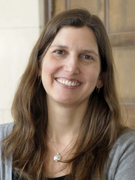 Time/Date: 3:30 Tuesday, April 11
Time/Date: 3:30 Tuesday, April 11Location: Hallam Auditorium, Room 206, Claxton Building, 1122 Volunteer Blvd.
Speaker: Suzanne Alonzo, Ecology and Evolutionary Biology, Univ. of California, Santa Cruz; NIMBioS Postdoctoral Fellows Invited Distinguished Visitor (host Sarah Flanagan)
Topic: The social side of sex: Male/female coevolution and social plasticity affect reproductive patterns
Abstract: Extensive empirical and theoretical research has focused on understanding the diversity of reproductive patterns and behavioral interactions observed in nature. I have argued that considering both coevolutionary dynamics and social interactions can improve our ability to explain and predict this striking variation. In my talk, I will discuss why these dynamics are essential for understanding the evolution of male and female reproductive traits. I will first present the results of some general theory examining how social interactions affect evolutionary dynamics and discuss extensions of this theory to our understanding of specific reproductive behaviors. I will then present some data on how interactions between the sexes at mating and fertilization affect sexual selection, potentially driving the evolution of sperm allocation and paternal care in a Mediterranean fish (the ocellated wrasse, Symphodus ocellatus). Finally, I will discuss what these and other similar empirical patterns have to say about what theory and data are needed if we wish to improve our understanding of and capacity to predict the diversity of reproductive patterns observed in nature. Click here for more information. Seminar flyer (pdf).
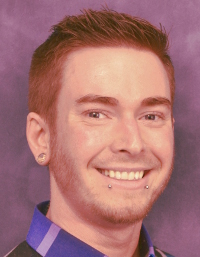 Time/Date: 12:00 p.m. Friday, April 7
Time/Date: 12:00 p.m. Friday, April 7Location: Hallam Auditorium, Room 206, Claxton Building, 1122 Volunteer Blvd.
Speaker: Brad Greening, National Center for Emerging Zoonotic and Infectious Diseases
Topic: Simple models for public health decision making and emergency response
Abstract: This talk will discuss the value of simple models that can be built quickly and with available data to aid public health decision makers in response to catastrophic infectious disease events. Concepts will be illustrated using an example from CDC's Ebola Response, where a simple model was developed to assess the costs and benefits of a proposed intervention to provide prophylactic antimalarial treatment to all contacts of a suspected Ebola case. Click here for more information.
 Time/Date: 3:30 Thursday, March 23
Time/Date: 3:30 Thursday, March 23Location: Hallam Auditorium, Room 206, Claxton Building, 1122 Volunteer Blvd.
Speaker: Richard Rebarber, Mathematics, Univ. of Nebraska
Topic: Feedback control approaches to population management
Abstract: We describe three novel uses of feedback control for population management problems, and give case studies for each of them. We assume that the controller has sampled access to an observation of the system, for instance, a count of those members in the reproductive stage of the population. The problems and tools we will discuss are: (1) For the eradication of an invasive species, we propose the use of high gain tracking to determine effective and robust application of pesticide or biological control; (2) For the conservation of an endangered species, we propose the use of low gain tracking to determine effective and robust restocking (such as replanting); (3) To robustly identify the entire state of the system and improve the estimates of the system parameters, we can use the Kalman filter. These types of controllers do not minimize cost like optimal control will, but they can work in the presence of quite a bit of uncertainty. Click here for more information. Seminar flyer (pdf).
 Time/Date: 3:30 Tuesday, January 31
Time/Date: 3:30 Tuesday, January 31Location: Hallam Auditorium, Room 206, Claxton Building, 1122 Volunteer Blvd.
Speaker: Oyita Udiani, NIMBioS Postdoctoral Fellow
Topic: Mathematical models of social dynamics and task organization in animal societies
Abstract: A key factor in the success of social animals is their organization of work. Mathematical models have been instrumental in showing how complex organizational strategies like division of labor can emerge from the interactions of individuals following simple rules. However, not much is known about how these strategies are regulated in response to environmental changes. In this talk, I will present some ongoing projects to explore this question using experimental colonies of the harvester ant (Pogonomyrmex spp). I discuss how a behavioral modeling approach (i.e., one that examines the mechanisms of decision-making at the individual level) can provide insights into the organizational patterns and productivity differences observed in experiments. Examples to be discussed include collective foraging in mature colonies and offspring care in newly formed ones. Click here for more information. Seminar flyer (pdf).
NIMBioS
1122 Volunteer Blvd., Suite 106
University of Tennessee
Knoxville,
TN 37996-3410
PH: (865) 974-9334
FAX: (865) 974-9461
Contact NIMBioS


